Featured
- Reset filters
- 33 results
- (-) South Sudan
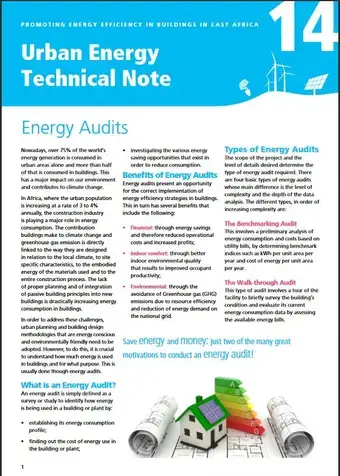
Brief
Urban Energy Technical Note 14: Energy Audits
2015
Nowadays, over 75% of the world’s energy generation is consumed in urban areas alone and more than half of that is consumed in buildings. This has a major impact on our environment and contributes to climate change.
Read now
Learn more
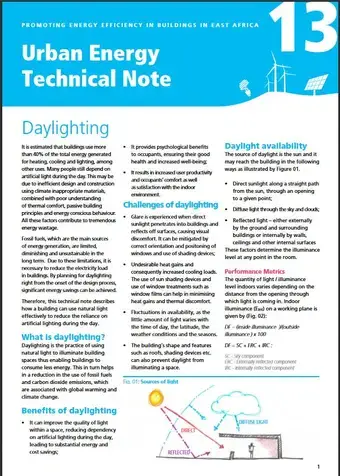
Brief
Urban Energy Technical Note 13: Daylighting
2015
It is estimated that buildings use more than 40% of the total energy generated for heating, cooling and lighting, among other uses. Many people still depend on artificial light during the day. This may be due to inefficient design and construction using climate inappropriate materials, combined with poor understanding of thermal comfort, passive building principles and energy conscious behaviour. All these factors contribute to tremendous energy wastage.
Read now
Learn more
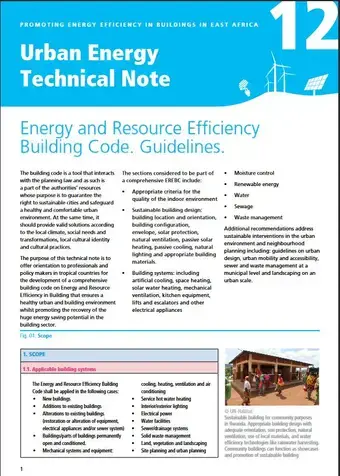
Brief
Urban Energy Technical Note 12: Energy and Resource Efficiency Building Code. Guidelines
2015
The building code is a tool that interacts with the planning law and as such is a part of the authorities’ resources whose purpose is to guarantee the right to sustainable cities and safeguard a healthy and comfortable urban environment. At the same time, it should provide valid solutions according to the local climate, social needs and transformations, local cultural identity and cultural practices.
Read now
Learn more
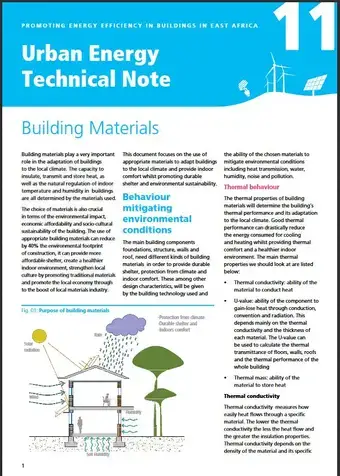
Brief
Urban Energy Technical Note 11: Building Materials
2015
Building materials play a very important role in the adaptation of buildings to the local climate. The capacity to insulate, transmit and store heat, as well as the natural regulation of indoor temperature and humidity in buildings are all determined by the materials used.
Read now
Learn more
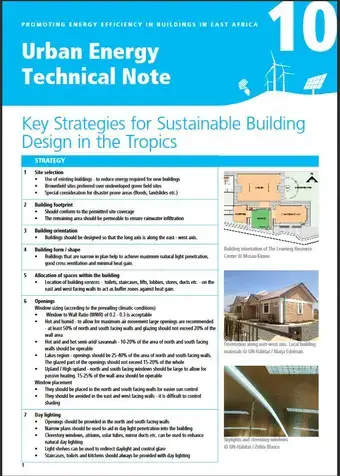
Brief
Urban Energy Technical Note 10: Key Strategies for Sustainable Building Design in the Tropics
2015
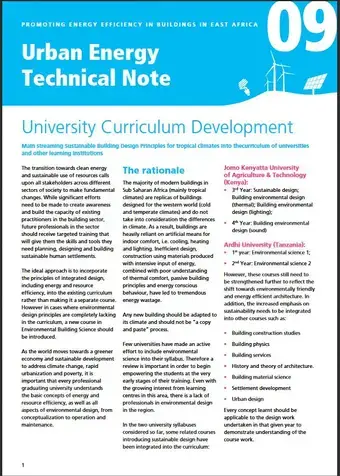
Brief
Urban Energy Technical Note 09: University Curriculum Development
2015
The transition towards clean energy and sustainable use of resources calls upon all stakeholders across different sectors of society to make fundamental changes. While significant efforts need to be made to create awareness and build the capacity of existing practitioners in the building sector, future professionals in the sector should receive targeted training that will give them the skills and tools they need planning, designing and building sustainable human settlements.
Read now
Learn more
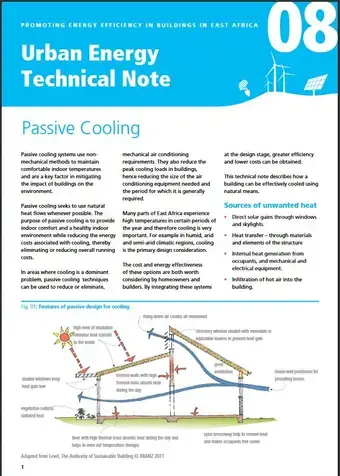
Brief
Urban Energy Technical Note 08: Passive Cooling
2015
Passive cooling systems use non-mechanical methods to maintain comfortable indoor temperatures and are a key factor in mitigating the impact of buildings on the environment.
Read now
Learn more
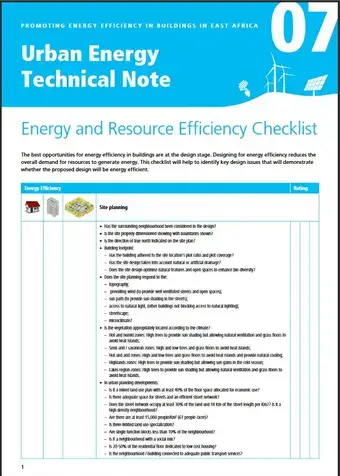
Brief
Urban Energy Technical Note 07: Energy and Resource Efficiency Checklist
2015
The best opportunities for energy efficiency in buildings are at the design stage. Designing for energy efficiency reduces the overall demand for resources to generate energy. This checklist will help to identify key design issues that will demonstrate whether the proposed design will be energy efficient.
Read now
Learn more
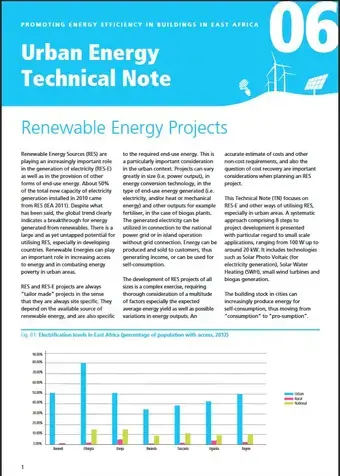
Brief
Urban Energy Technical Note 06: Renewable Energy Projects
2015
Renewable Energy Sources (RES) are playing an increasingly important role in the generation of electricity (RES-E) as well as in the provision of other forms of end-use energy. About 50% of the total new capacity of electricity generation installed in 2010 came from RES (IEA 2011). Despite what has been said, the global trend clearly indicates a breakthrough for energy generated from renewables. There is a large and as yet untapped potential for utilising RES, especially in developing countries…
Read now
Learn more
Document
Actions taken by UNHabitat to strengthen protection against sexual exploitation and abuse and against sexual harassment (PSEA/SH) in the workplace
发表于 五月 6th, 2024
Read now
Document
Implementation of the UN Development System Reform in UN-Habitat
发表于 五月 6th, 2024
Read now
Document
Update on the implementation of all the resolutions adopted by the United Nations Habitat Assembly of the United Nations Human Settlements Programme
发表于 五月 6th, 2024
Read now
Document
Preparations for the twelfth session of the World Urban Forum
发表于 五月 6th, 2024
Read now
Document
Report of the Executive Director on normative and operational activities of UN-Habitat
发表于 五月 6th, 2024
Read now
Document
Update on the draft work programme of UN-Habitat and the draft budget of the United Nations Habitat and Human Settlements Foundation for 2025
发表于 五月 6th, 2024
Read now
Document
Financial, budgetary and administrative matters, including the implementation of the resource mobilization strategy in accordance with the strategic plan for the period 2020–2025 and action by UN-Habitat to address geographical and gender imbalances
发表于 五月 6th, 2024
Read now
Statement and Speech
Statement of the Director-General of the United Nations Office in Nairobi at the first session of the Executive Board for 2024
发表于 五月 6th, 2024
Read now
Statement and Speech
Statement of the Cabinet Secretary for Lands, Public Works, Housing and Urban Development of Kenya at the first session of the Executive Board for 2024
发表于 五月 6th, 2024
Read now